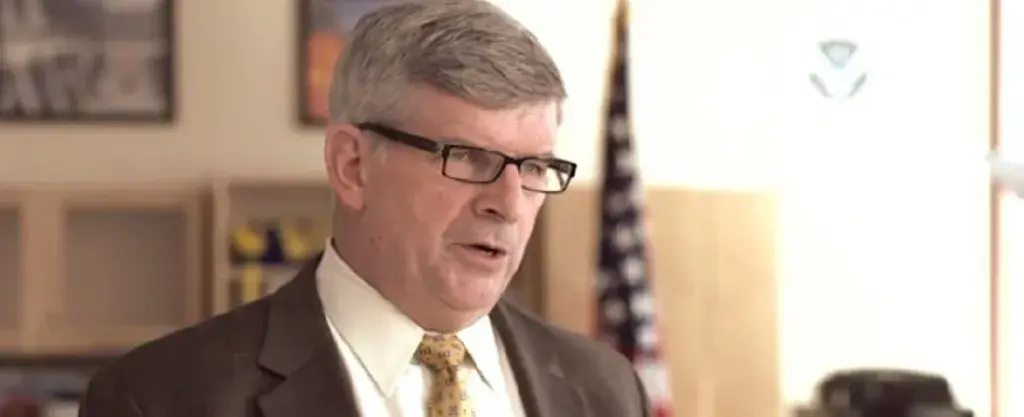Guest post from Dan Cotter, director, Department of Homeland Security (DHS) Science and Technology Directorate (S&T) First Responders Group (FRG).
 “The First Responders Group’s entire mission is serving the needs of the public safety community. FRG successes are built on the input, cooperation and volunteerism from our first responders. Without their support, nothing we do would be possible.” - Dan Cotter
“The First Responders Group’s entire mission is serving the needs of the public safety community. FRG successes are built on the input, cooperation and volunteerism from our first responders. Without their support, nothing we do would be possible.” - Dan Cotter
Over the past year, FRG has worked to address the emerging needs and capability gaps faced by responders across all disciplines on a daily basis and during emergencies. We know about these things because we work hand-in-hand with these men and women every day, using their direct feedback to inform the research, development, testing and evaluation of technologies that will enhance their performance and keep them safe on the job. We are proud to serve as a catalyst for first responder engagement and innovation.
“In 2015, we served this community by developing and transitioning technologies ranging from personal protective equipment and interoperable communications interfaces to a mobile sensor for locating victims buried in rubble after disasters. What we did in 2015 will, we hope, make responders safer and more effective, and that increases the security and safety of the people who live in their communities.” - Dan Cotter
In coming weeks, you will hear firsthand from several of my colleagues about many of these technologies, as well as key efforts we’ve launched to bring together our nation’s — and the world’s — greatest minds in service to responders. Collaboration was key in 2015 and will be even more important in the new year and beyond.
“On behalf of FRG, I want to extend my thanks to all those who helped us during the year.” - Dan Cotter
 I’m excited to report that among this year’s successes, FRG kicked off the Next Generation First Responder (NGFR) Apex Program in January. Through NGFR, FRG will design new capabilities, adapt existing technology and work to stimulate private sector innovation to ensure the next generation of first responders is protected, connected and fully aware. FRG hosted a series of town hall meetings throughout the year, including at the White House Smart Cities Forum in September.
I’m excited to report that among this year’s successes, FRG kicked off the Next Generation First Responder (NGFR) Apex Program in January. Through NGFR, FRG will design new capabilities, adapt existing technology and work to stimulate private sector innovation to ensure the next generation of first responders is protected, connected and fully aware. FRG hosted a series of town hall meetings throughout the year, including at the White House Smart Cities Forum in September.
In May, a technology we have been developing for nearly three years, Finding Individuals for Disaster and Emergency Response (FINDER), was used in Nepal to help locate trapped victims after major earthquakes devastated the country. FINDER uses microwave radar to detect small movements from breathing and heartbeats, even when the signal must pass through several feet of rubble and building debris. The technology assisted international search and rescue teams in locating four survivors and has since been transitioned to two industry partners for commercialization.
In conjunction with the 10th anniversary of Hurricane Katrina in August, FRG met with members of the New Orleans Office of Homeland Security and Preparedness to collaborate on future research and development (R&D) opportunities with respect to disaster preparedness. We also discussed a joint exercise held in April with S&T’s Virtual Social Media Working Group and the Louisiana Governor's Office of Homeland Security and Emergency Preparedness to evaluate how emergency managers and responders operationalize information obtained from social media in simulated disaster scenarios. A lessons learned report will be released in early 2016.
In October, FRG and S&T’s international partners launched a global initiative, the International Forum to Advance First Responder Innovation, to improve the efficiency, effectiveness and safety of worldwide first responders. This new effort brings representatives together from around the world to address capability gaps, characterize global first responder markets and educate first responders about available technology.
 These are just a handful of the successes FRG has achieved this year to improve the resources available to first responders allowing them to stay safe and save lives. Upcoming articles will cover technology milestones and successes that have taken place throughout this year and highlight our work with partners in government, industry, academia and (of course) our nation’s first responders.
These are just a handful of the successes FRG has achieved this year to improve the resources available to first responders allowing them to stay safe and save lives. Upcoming articles will cover technology milestones and successes that have taken place throughout this year and highlight our work with partners in government, industry, academia and (of course) our nation’s first responders.
FRG has amazing things on the horizon for 2016 and beyond. We’ll continue working to make the next generation first responder more protected, connected and fully aware, while also weaving in technologies and resources to keep our nation resilient in the face of disasters. In each of the upcoming articles, you will also get a sneak peek into some upcoming R&D efforts. I encourage you to follow along and send us your feedback on Facebook and Twitter.
